"건축은 과거를 보존하는 동시에 미래를 위한 공간을 창조하는 것이다. 우리는 단순히 건물을 짓는 것이 아니라, 시간의 층위를 쌓아 올리는 것이다." - 왕슈(Wang Shu)
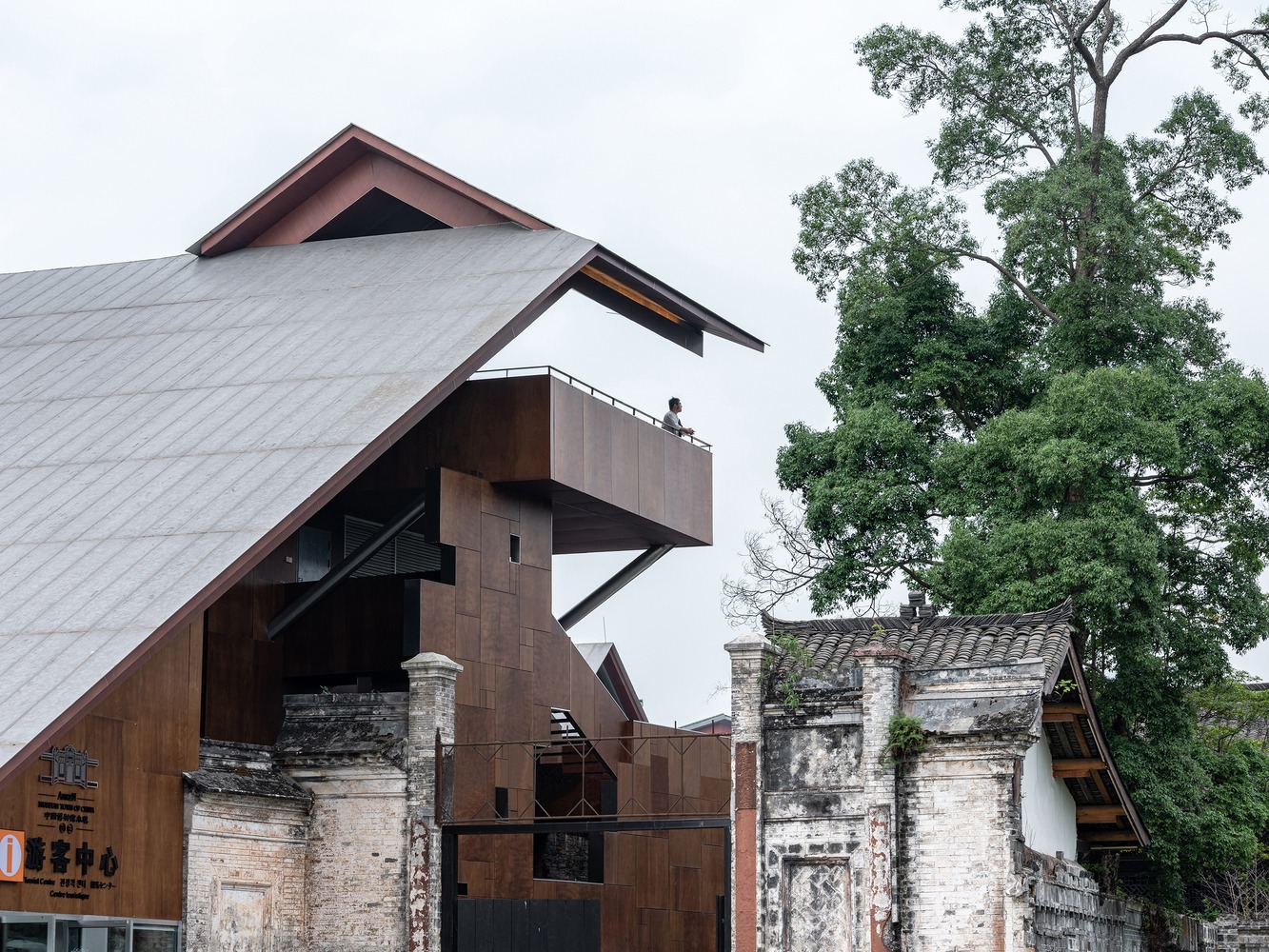
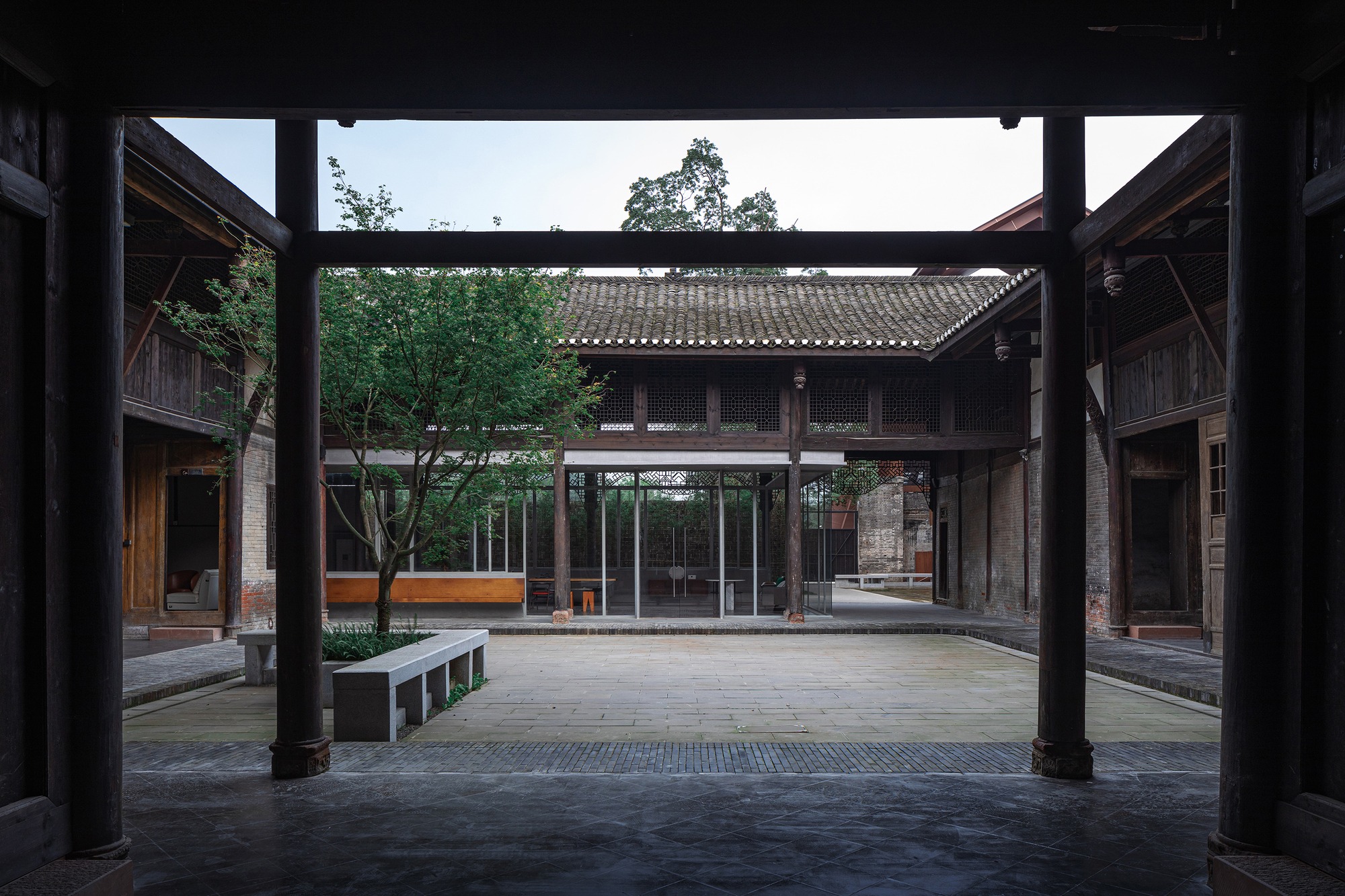 |
 |
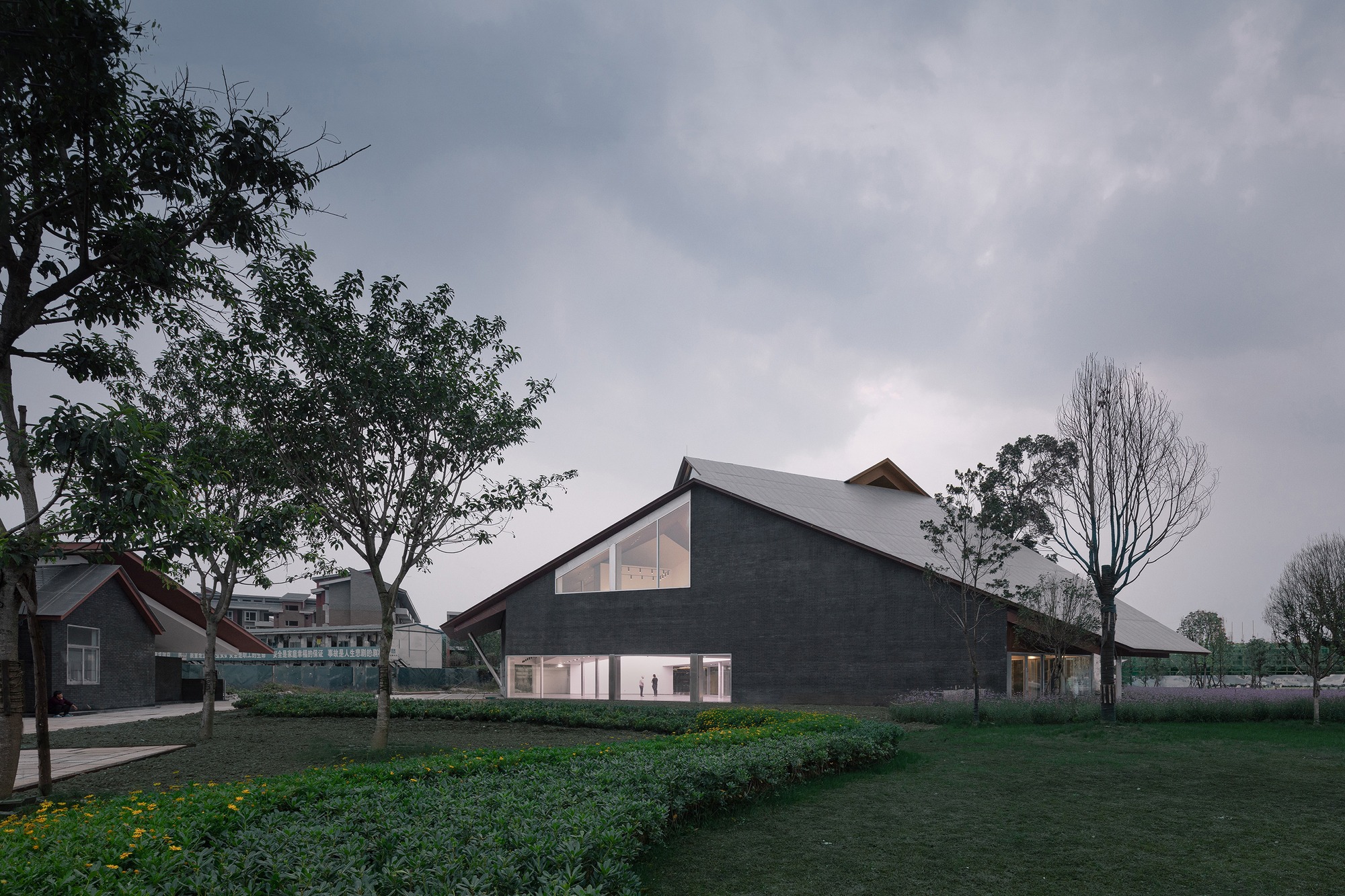 |
전통과 현대의 대화: 안런 료웨이대저택 관광센터 Atelier Li Xinggang-Renovation of Anren Liaowei Mansion Anren Tourist Center
안런 관광센터
청두 남서쪽 안런 고진 외곽에 자리한 안런 관광센터는 료웨이대저택의 보존재생 및 확장 프로젝트다. 원래 개인 저택이었던 료웨이대저택은 양조장과 농가로 사용되다가 방치되었다. 2018년 청두시 역사건물 및 문화유산 보호구역으로 지정된 이 건물은 이제 안런 고진의 방문자센터이자 커뮤니티센터로 새롭게 태어났다. 이 지역의 역사적 유전자로서 방문자센터는 새로 조성되는 주거지역의 출발점이 되어 임반 공간 공동체의 새로운 군집을 형성한다. 이 프로젝트는 중국 신도시 개발의 연구 표본이기도 하다.
프로젝트 부지는 고진 외곽 경계부에 위치하며, 중심가인 바즈 지구에서 약 1-2킬로미터 떨어져 있다. 주요 도로 남쪽에 자리하고 건너편 버스터미널과 마주하여 고진의 바깥 거실 같은 위치를 점하고 있다. 북쪽으로는 마을 주민들이 자발적으로 지은 조밀한 주거지역이 펼쳐지고, 서쪽에는 대규모 중고등학교와 대학 캠퍼스가 들어서 있다. 동쪽과 남쪽, 그리고 부지 자체는 원래 넓은 농지였다. 부지 내 기존 료웨이대저택은 주변 수목 및 관목과 함께 작은 임반 군락을 이루고 있다.
안런의 전형적인 대저택 건축인 료웨이대저택은 원래 높은 담장과 넓은 안뜰을 갖춘 3진 구조로, 곳곳에 나무와 급수탑이 자리했다. 고진 중심부에서 멀리 떨어진 탓에 사회적 관심과 관리가 부족했다. 보존재생 이전 대저택은 상태가 좋지 않았다. 안뜰 담장이 무너지고 문 구조물이 손상되었으며, 일부 구역의 지붕 골조는 노후화되거나 붕괴 위험에 처해 있었다. 설계에서는 문화유산 건물의 붕괴를 막기 위해 기존 구조물을 완전히 해체하고 재조립하는 복원을 실시했다. 확장 구역에는 철골 구조와 경량 구조를 적용했다. 기존 벽체 및 구조물과 직접 인접해 있지만, 시공과 완공 후 모든 과정에서 기존 건축 요소의 보호를 극대화했다.
료웨이대저택의 원래 배치는 북서쪽에서 남동쪽으로 점진적으로 확장되고 높아지는 3진 구조였다. 이러한 기존 안뜰 군락을 바탕으로 설계에서는 서쪽에 낮고 평평한 안뜰 확장부를, 동쪽에 높고 넓은 안뜰 확장부를 추가하여 3진 구조를 5진 구성으로 전환했다. 이러한 확장은 기존 박공지붕 건축의 공간적 특성을 이어가고 증폭시켜 기존과 신축의 응집력 있는 통합을 달성했다.
기존 대저택의 첫 번째 안뜰은 료웨이대저택과 기타 안런 대저택들의 복원 성과를 보여주며, 공간 자체가 고진의 중요한 유산 보존을 예증한다. 방문자들이 방문자센터에 들어서는 순간 독특한 지역 문화를 경험할 수 있게 한다. 새로운 둘러싸임은 소규모 목조 골조 시스템을 사용하여 기존 구조 구성 요소와 적절한 관계를 유지하는 경량 구조를 적용했다. 건물 안팎에서 방문자들에게 휴식 공간을 제공한다.
두 번째와 세 번째 안뜰은 상대적으로 규모가 작아서 담장이 손상되어 있었다. 기존 주거 배치를 복원하는 대신 구조 골조를 보존하여 반외부 공간을 조성하고, 양옆 안뜰과 연결되는 유연한 다목적 공간을 형성했다. 이는 다양한 커뮤니티 활동을 위한 장소를 제공한다.
서쪽 확장부는 기존 건물 벽체에 기대어 커뮤니티 광장을 향해 완만하고 낮은 한쪽 경사 지붕으로 뻗어나간다. 임반 도시의 보조 입구 광장과 마주하며 인간적 규모의 접점과 커뮤니티 공공 공간을 구축한다.
동쪽 확장부는 역사적 구조물과 인접한 곳에서 시작하는 박공지붕이 특징이며, 점진적으로 상승하는 절산식 처마선으로 안뜰을 둘러싼다. 직교하는 안뜰 건물 볼륨은 부지 경계에 의해 비스듬히 잘려 주요 입구를 향한 기념비적인 한쪽 경사 지붕 윤곽을 만들어낸다. 도시 가로와 광장을 향해서는 박공과 같은 수직 파사드를 보여주면서도, 낮은 처마를 통해 기존 건물에 대한 겸손한 규모와 정중한 거리감을 유지한다. 그 결과 생긴 혼합형 다각형 볼륨은 박공 끝단과 정형화된 처마 사이를 오가며 전통적인 박공지붕 유형과 현대적 추상화를 동시에 구현한다.
이 프로젝트는 중국 전통 건축의 정수인 안뜰 중심 공간 구성을 현대적 프로그램과 성공적으로 결합한 사례다. 우리나라 한옥의 마당 개념과도 통하는 이러한 공간 구성은 동아시아 건축 문화의 공통된 가치를 보여준다. 해체재조립이라는 섬세한 보존 기법과 현대적 확장의 절묘한 균형은 문화유산 활용의 새로운 모델을 제시하며, 과거와 현재, 전통과 혁신이 어떻게 조화롭게 공존할 수 있는지를 증명한다.
Write by Claude & Jean Browwn
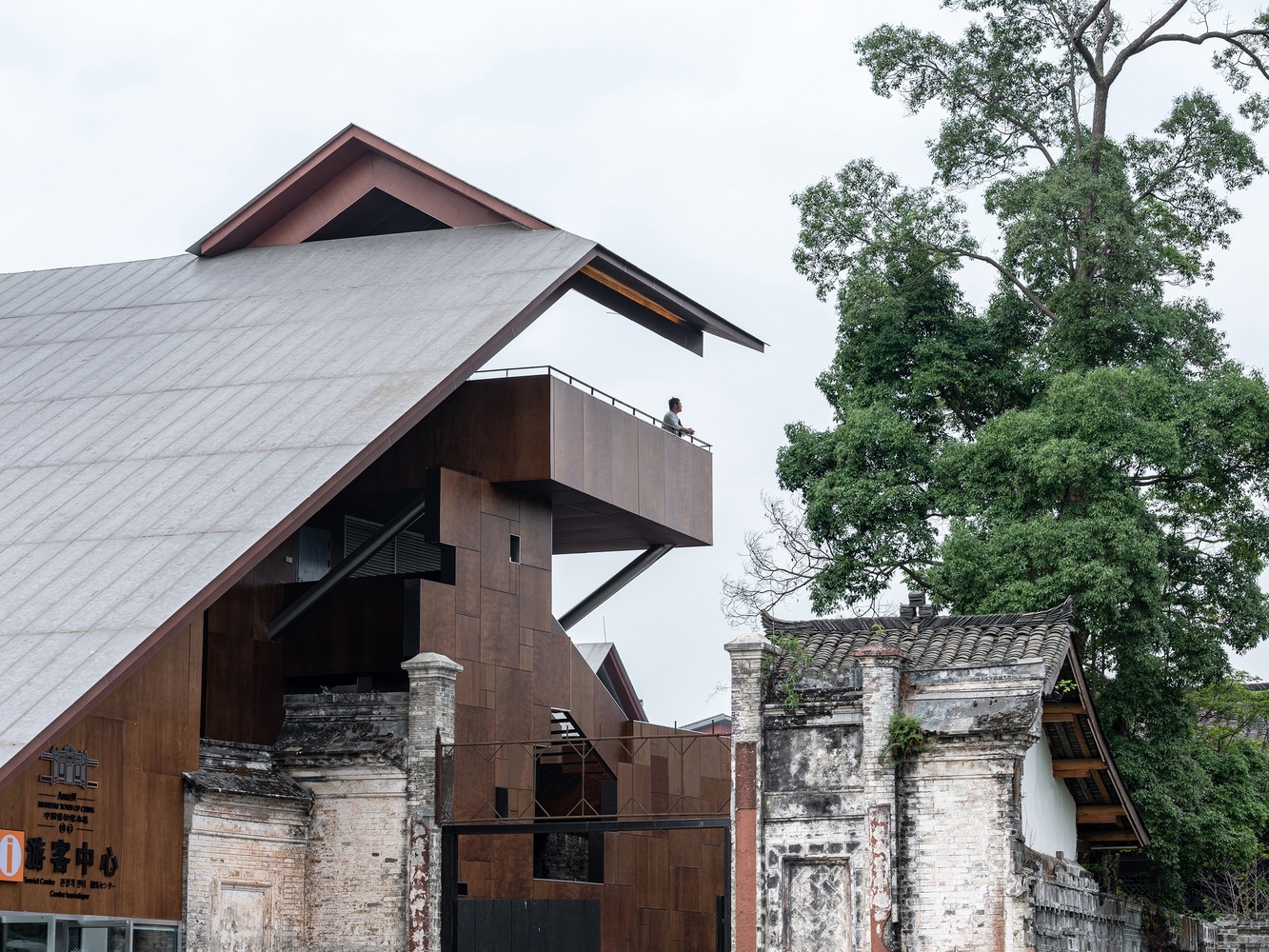
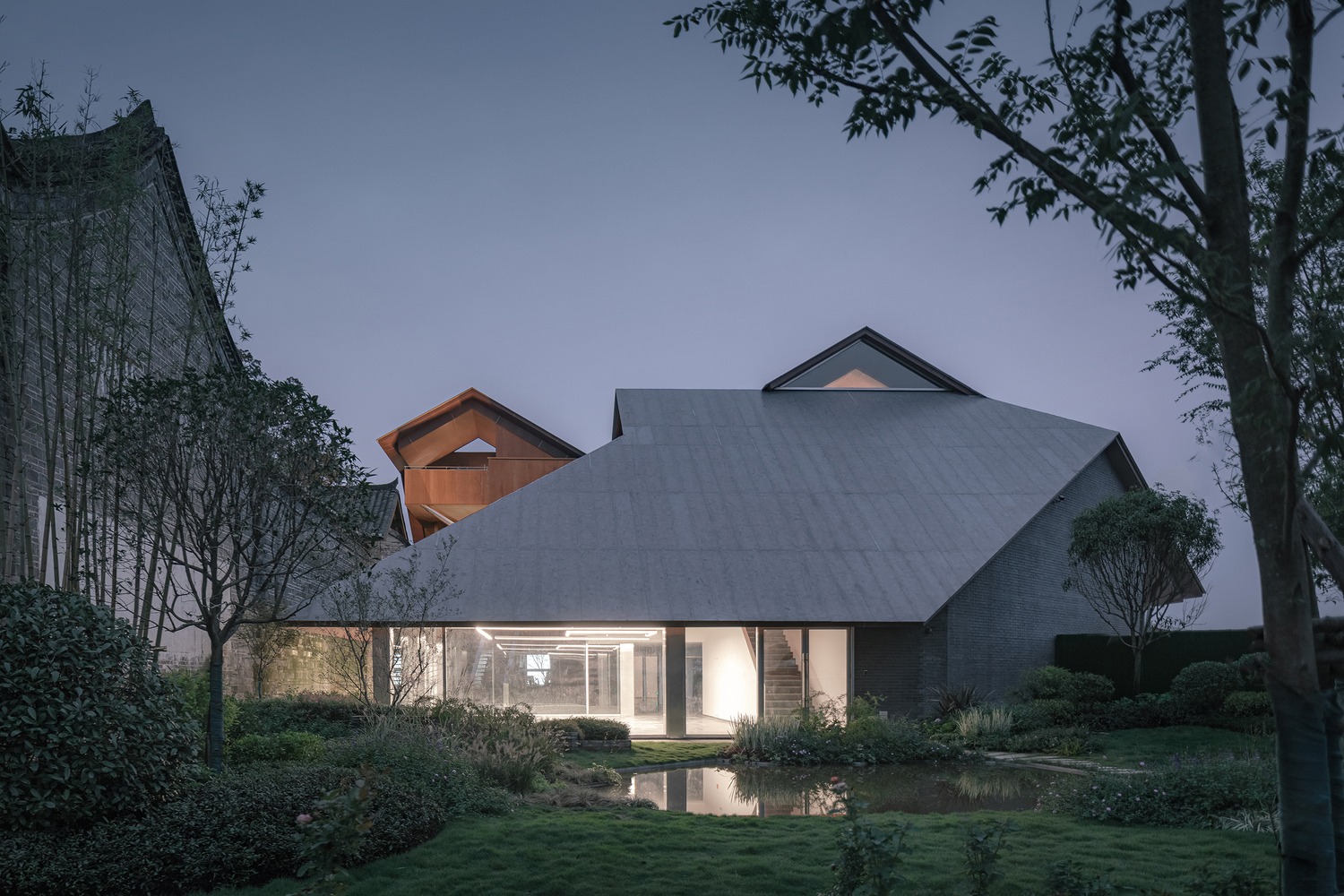
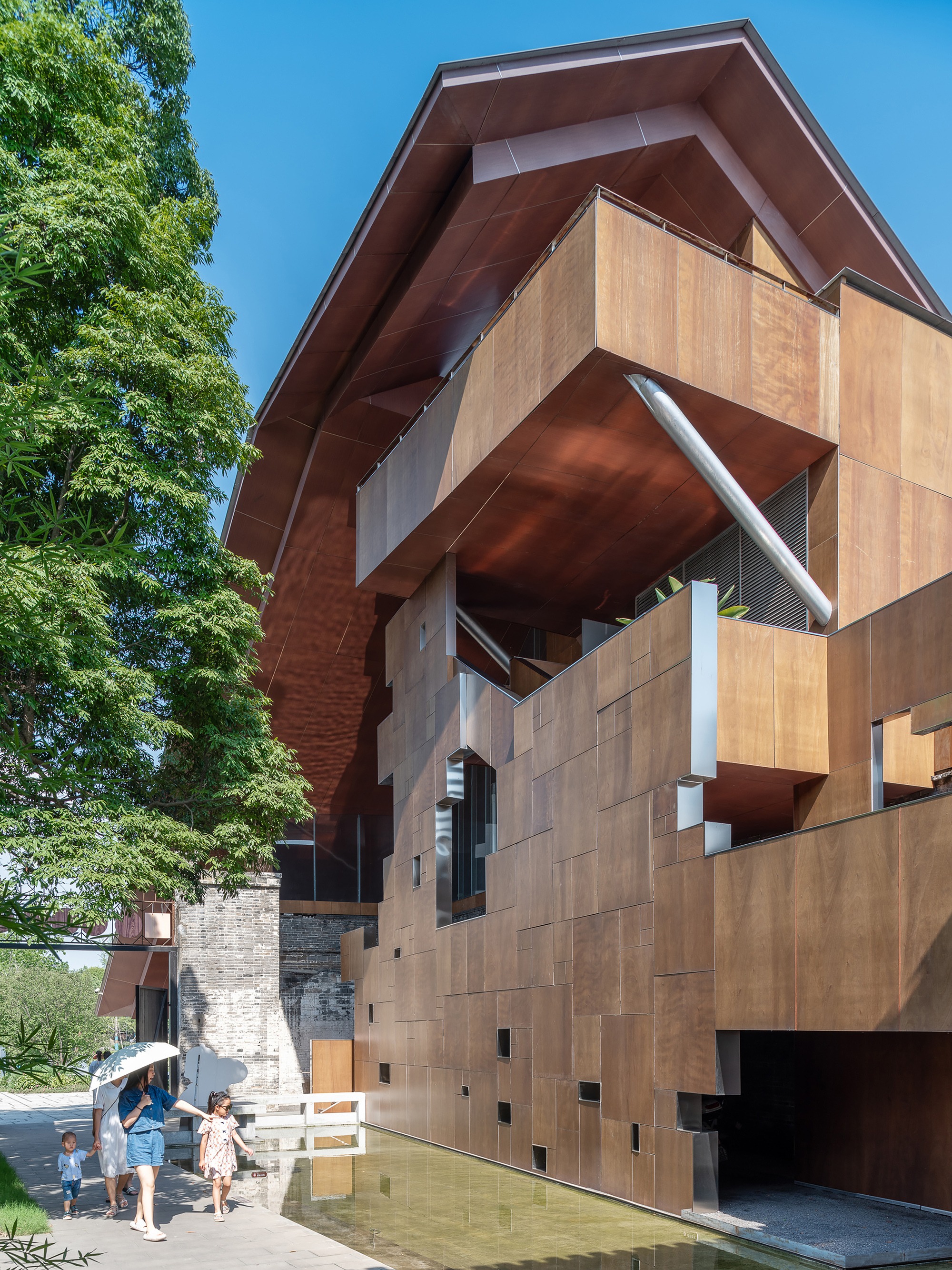
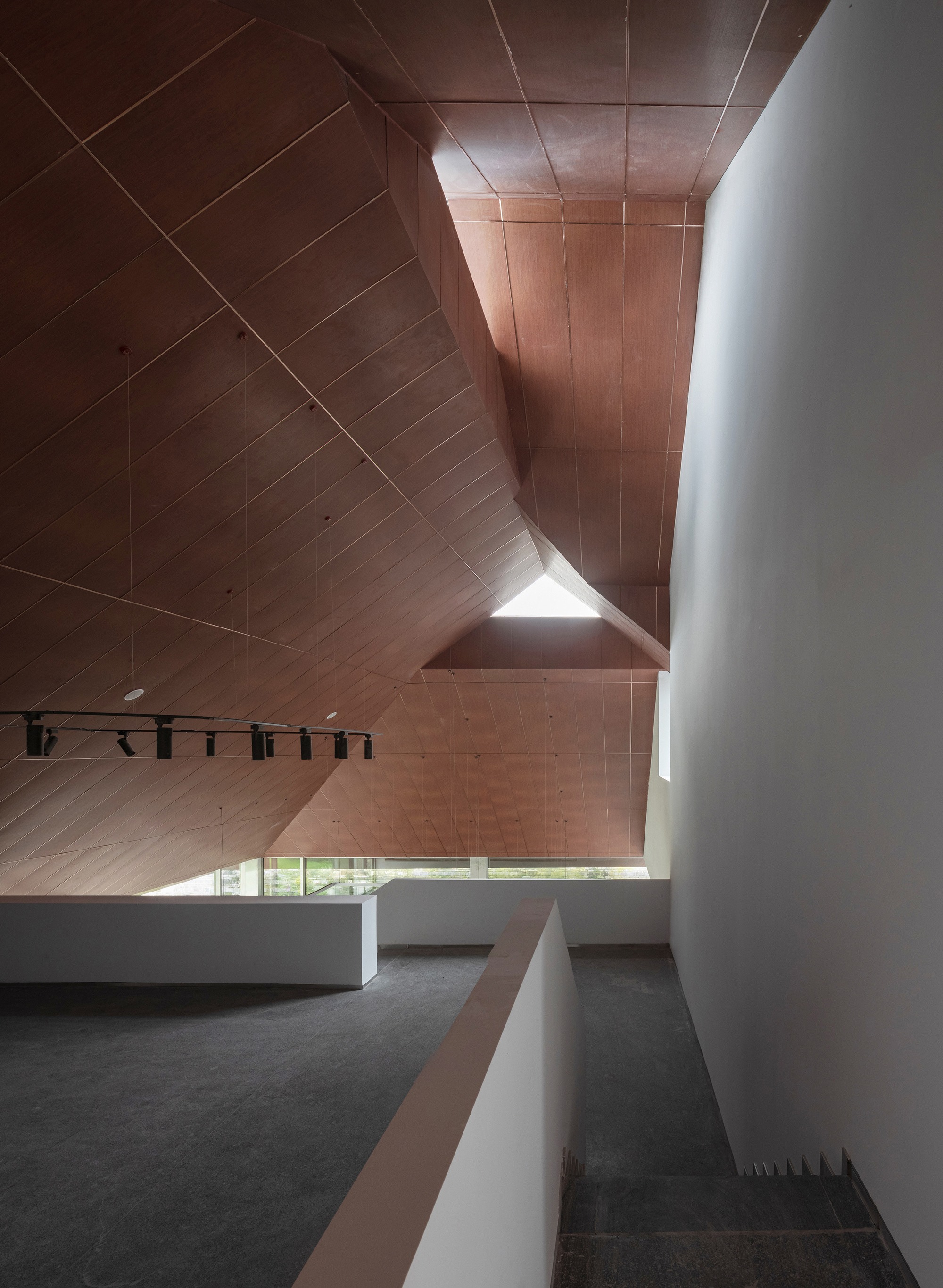
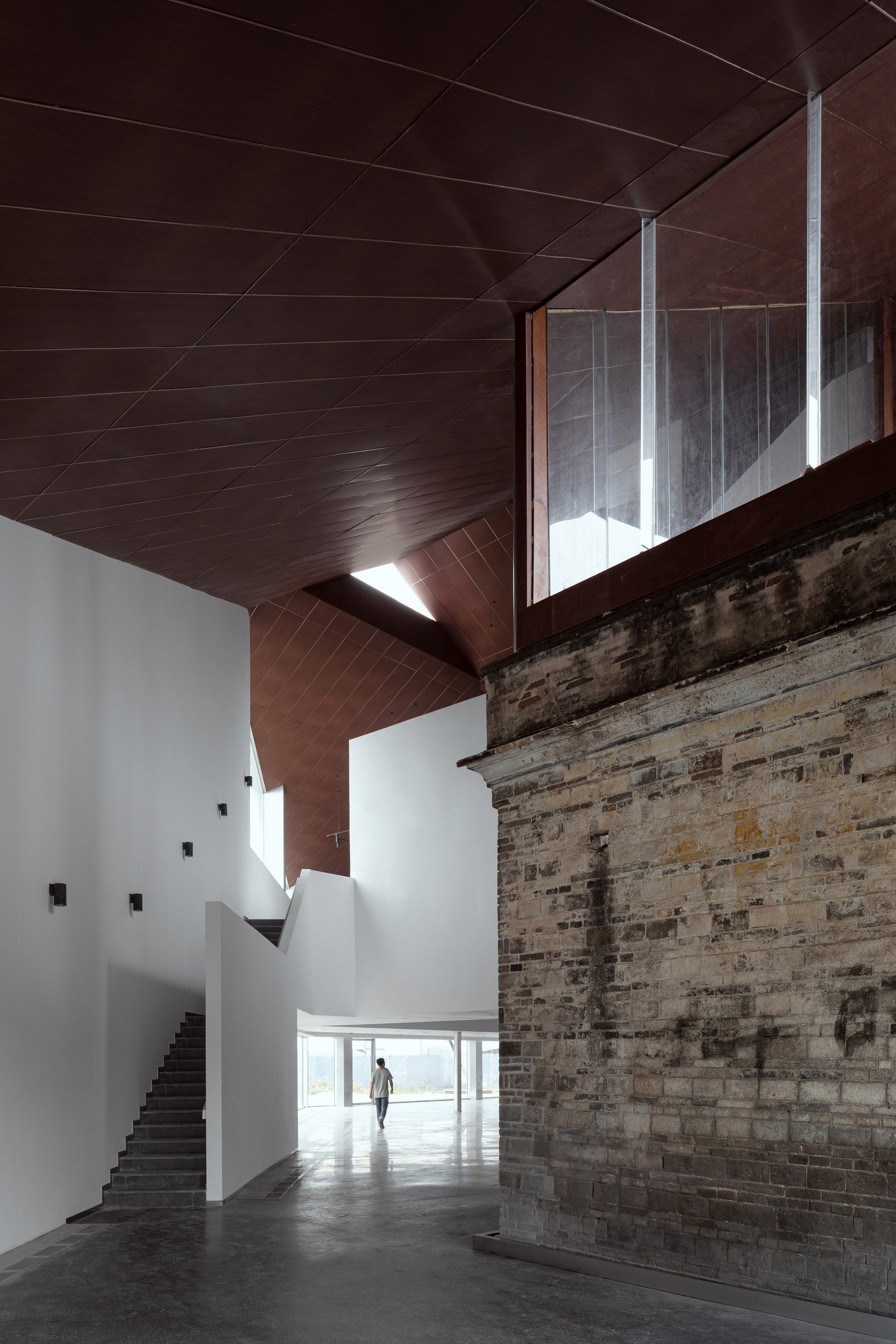






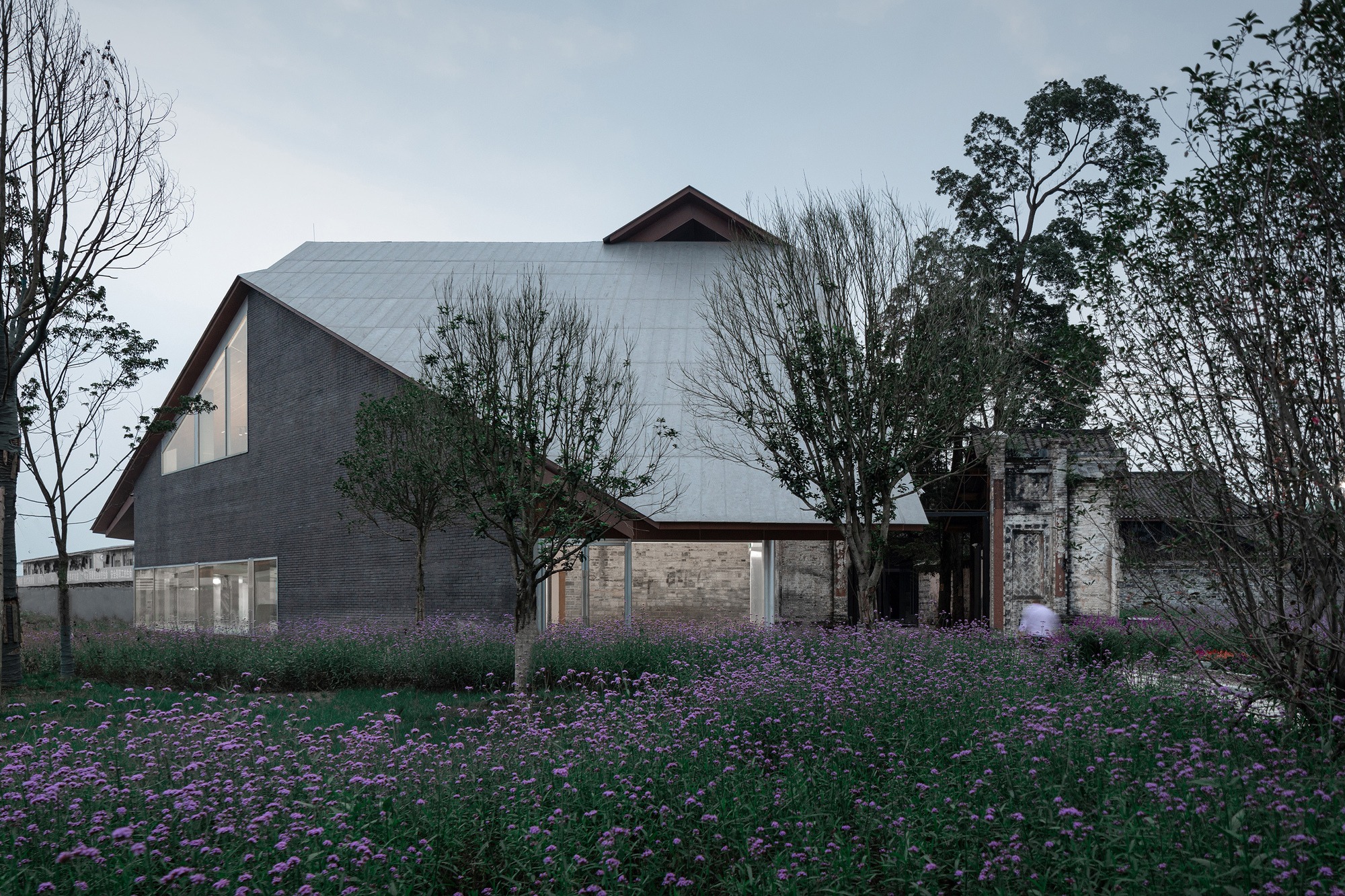
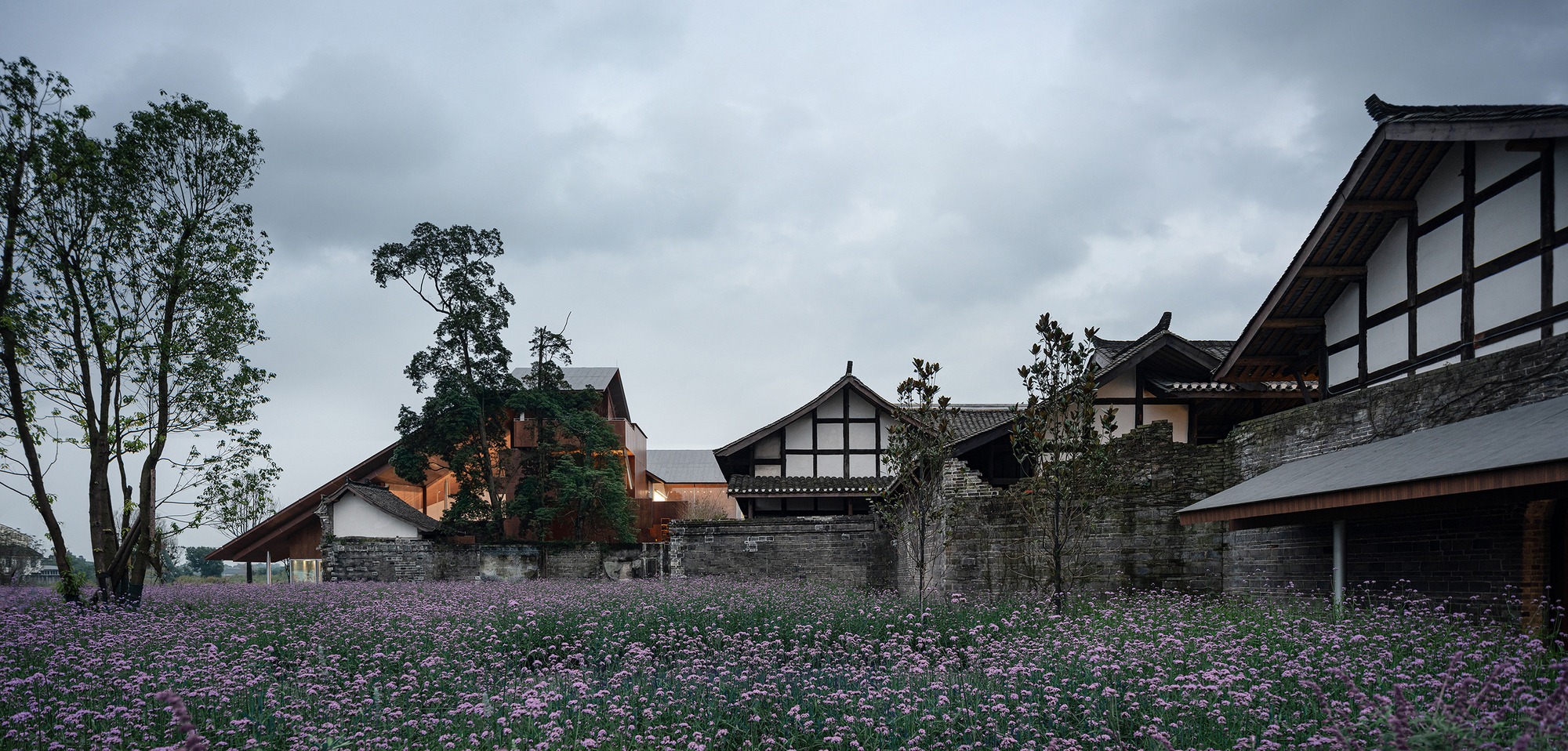
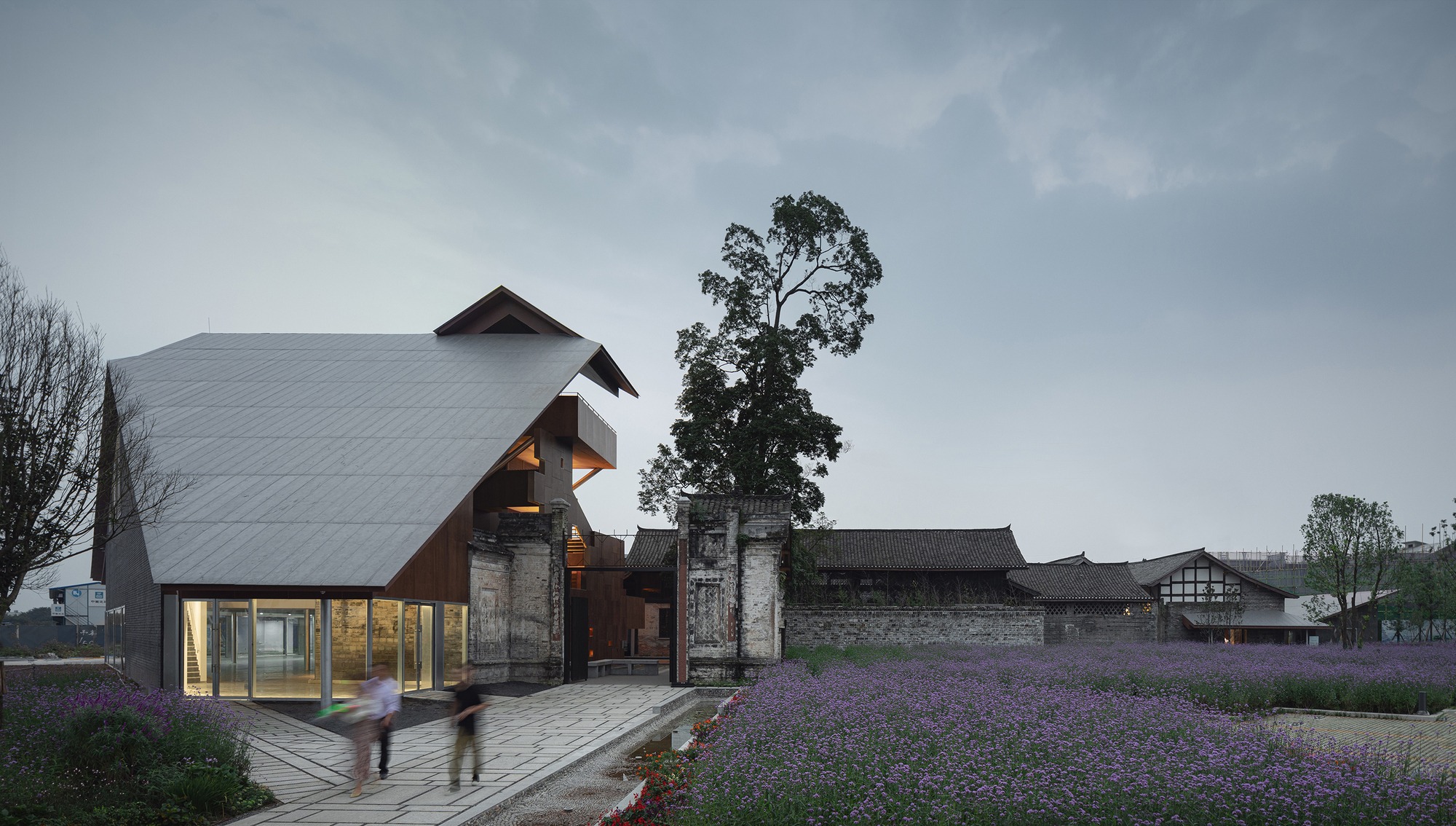
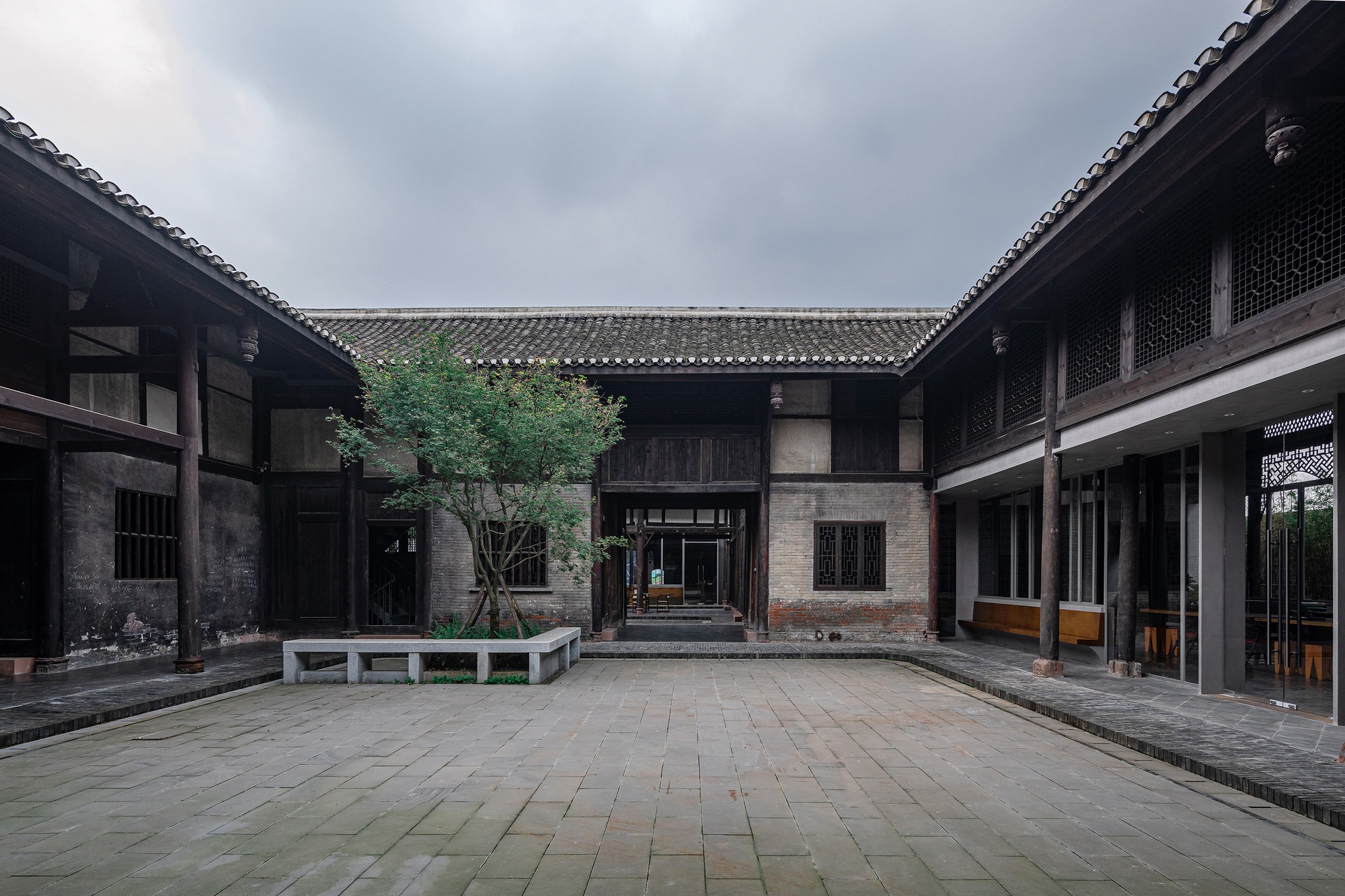



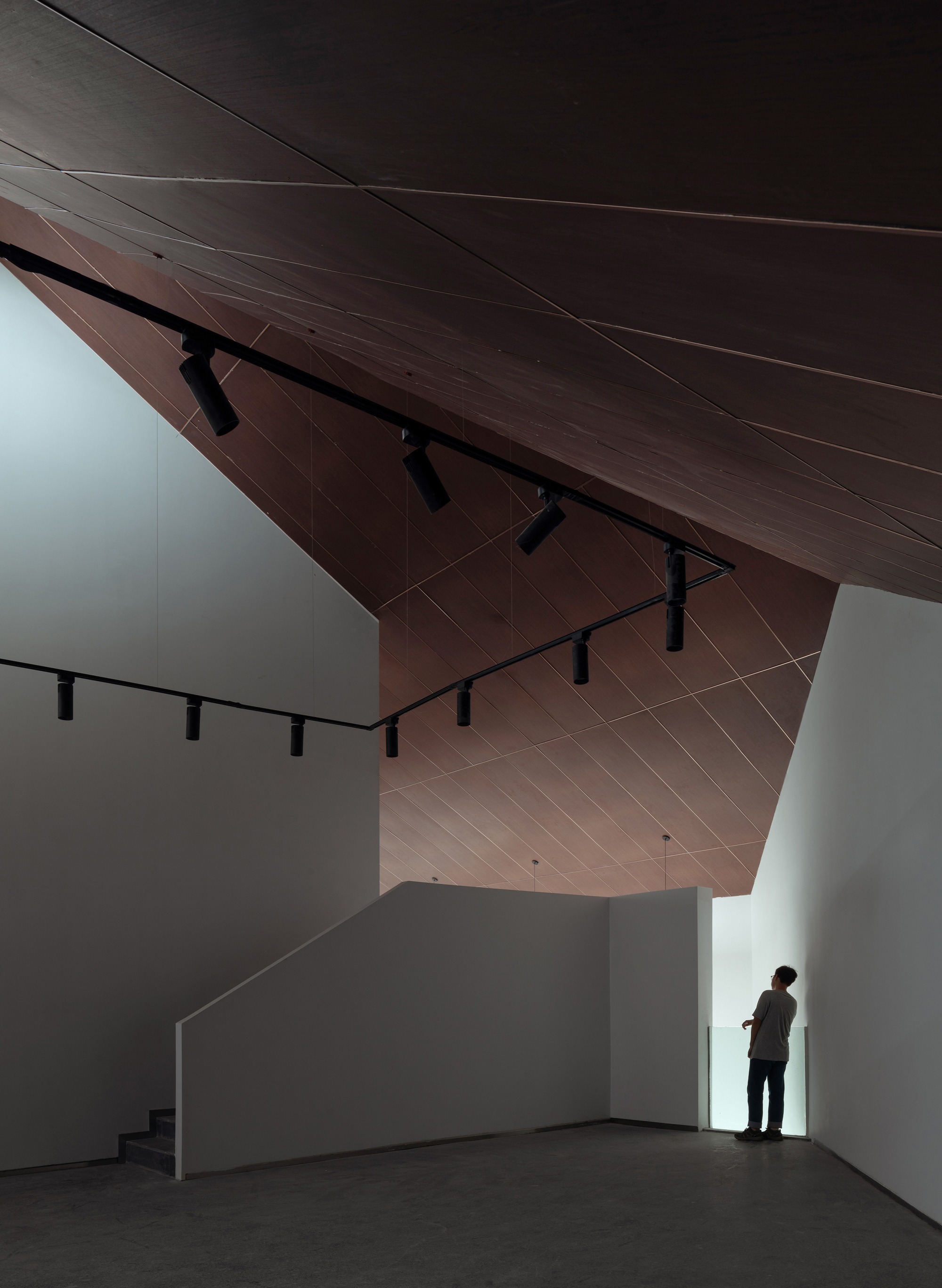
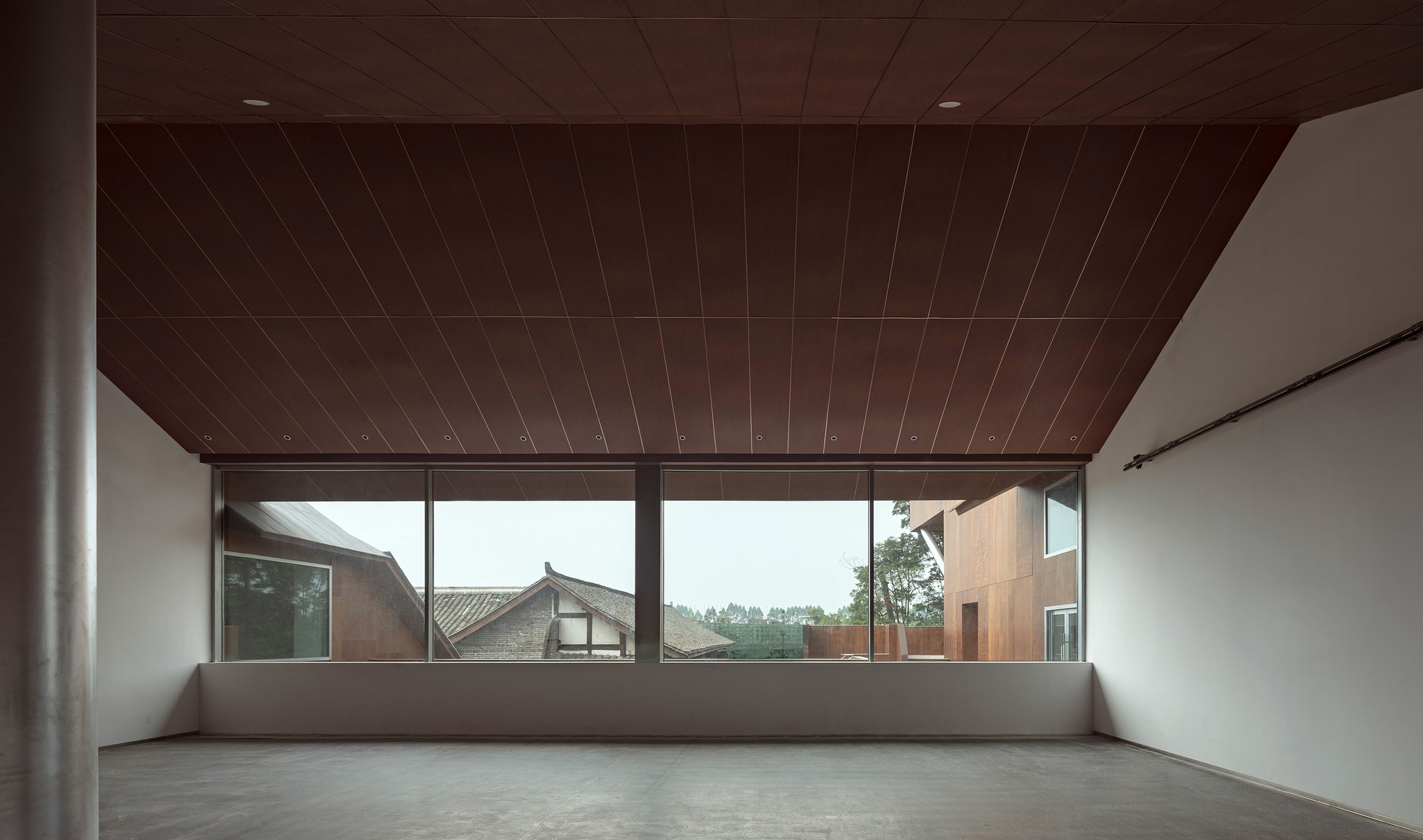


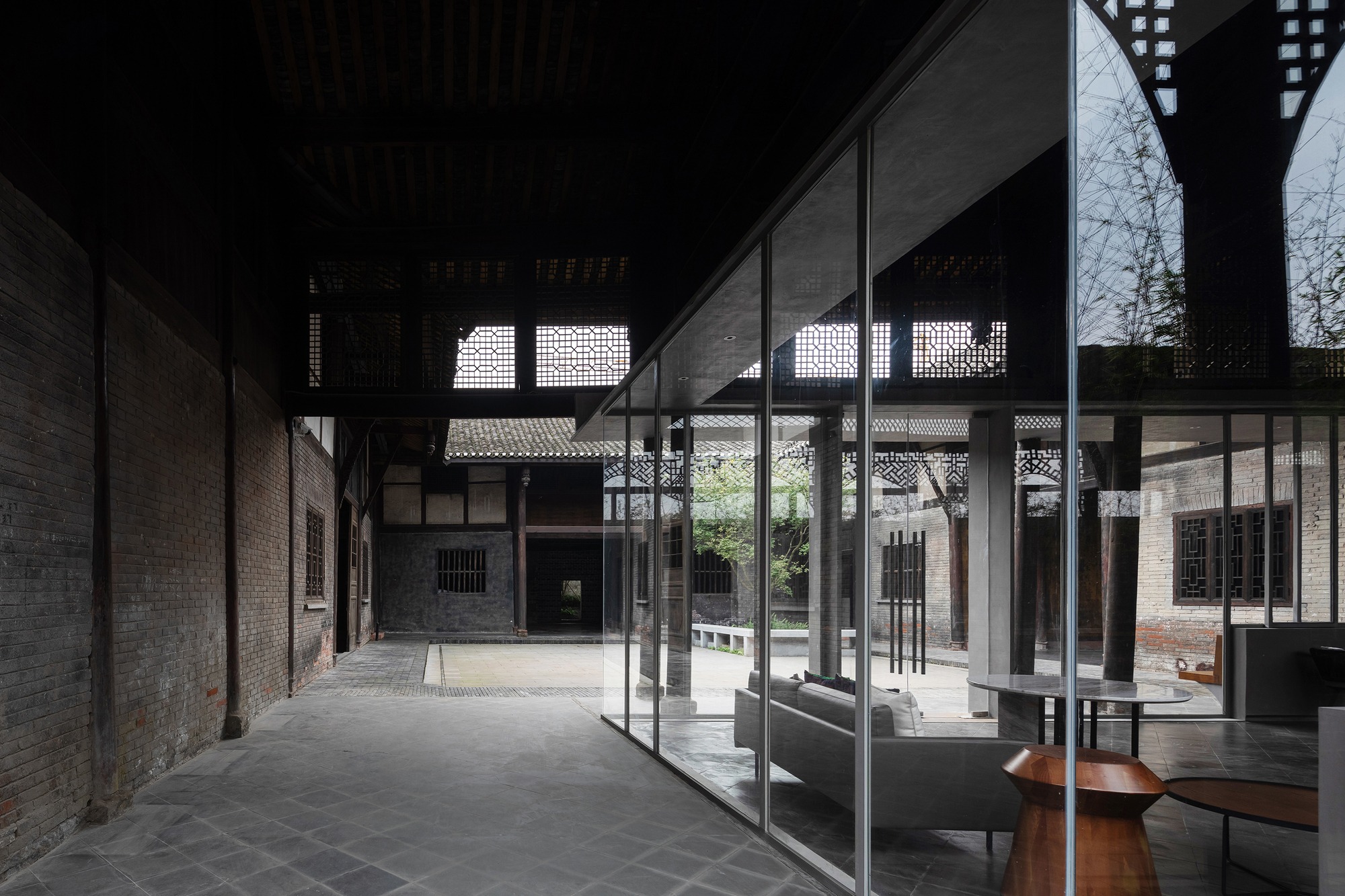
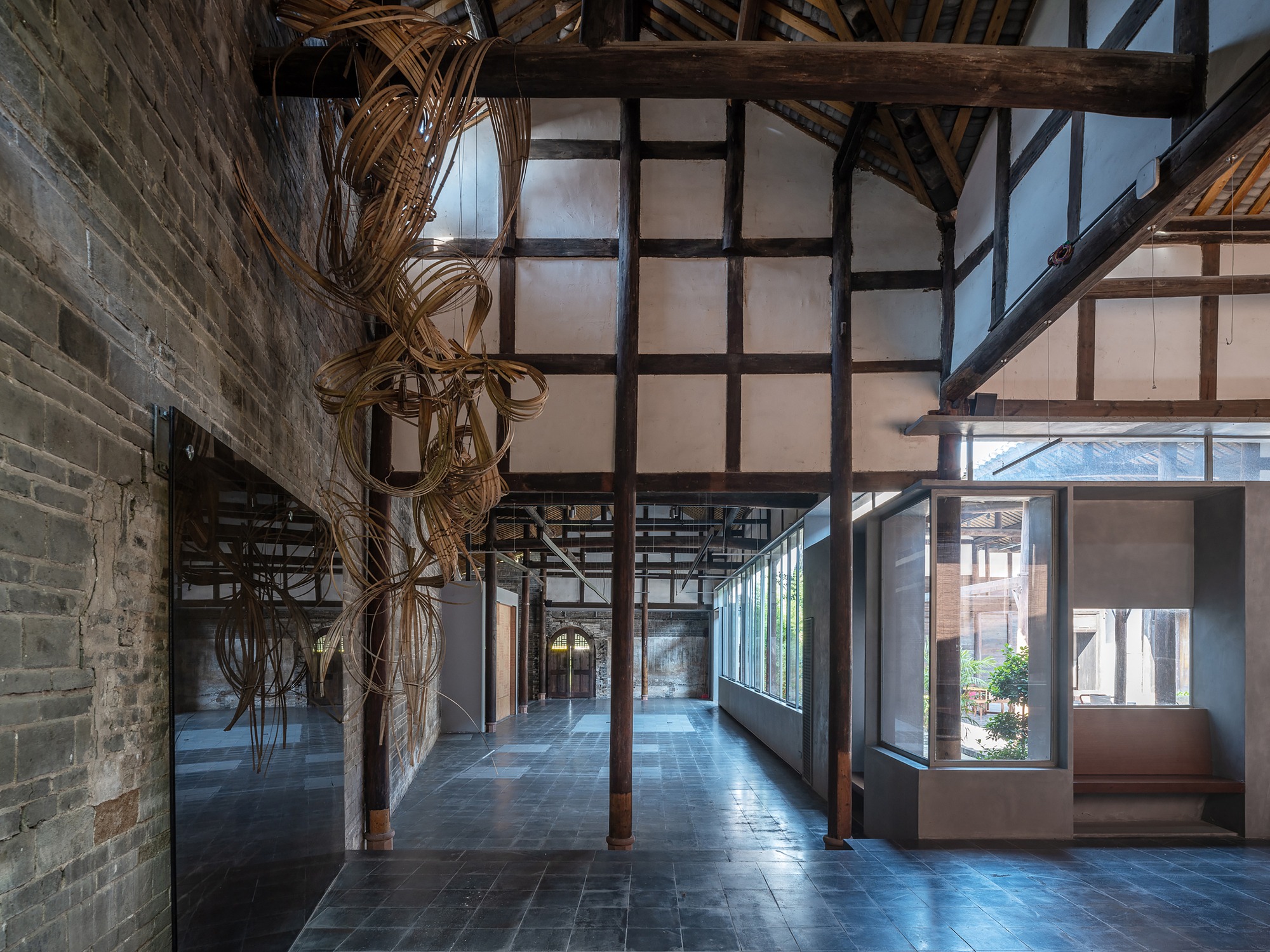







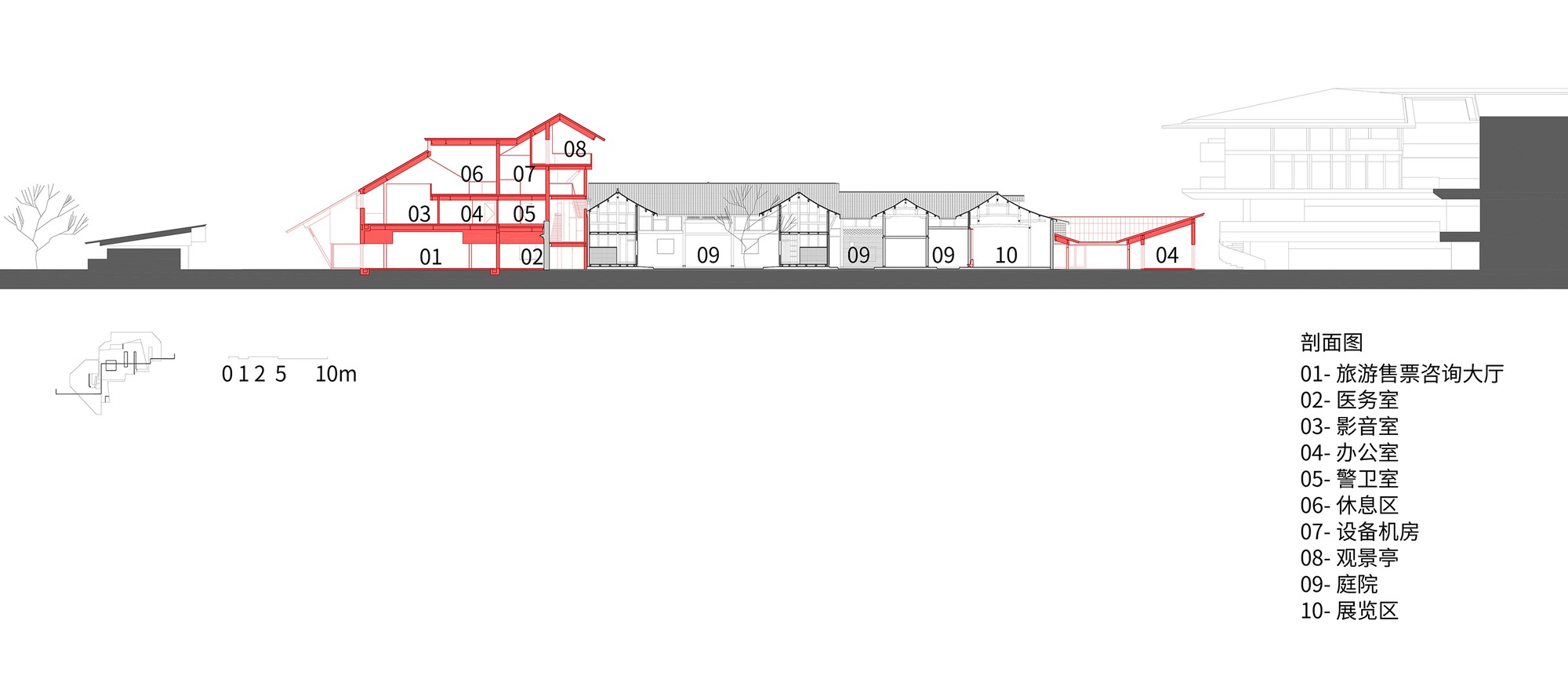

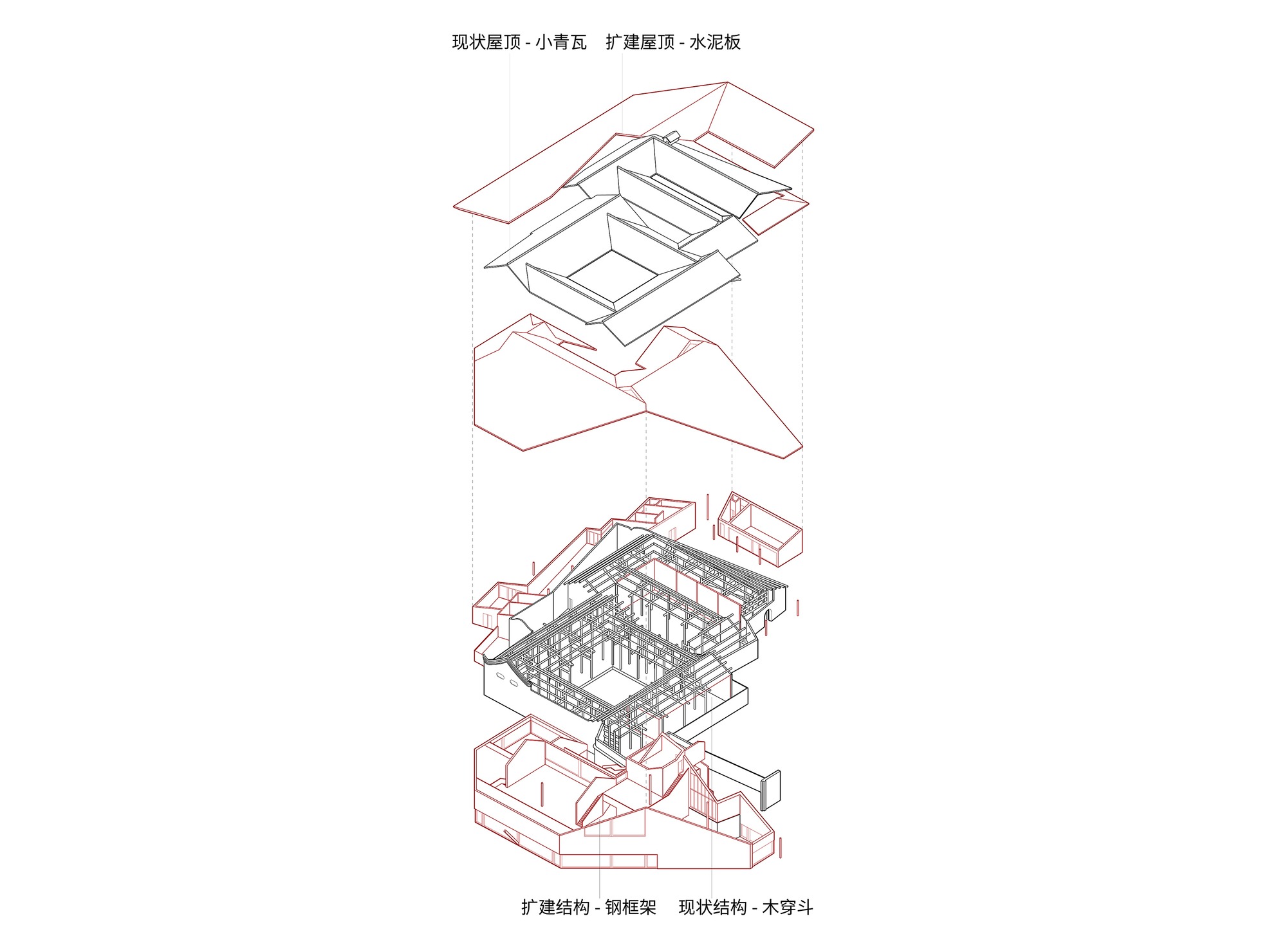



The Anren Tourist Center, located on the edge of Anren Ancient Town in southwestern Chengdu, is a renovation and expansion project of the Liao Wei Mansion. Originally a private residence, the Liao Wei Mansion later served as a brewery and farmer's dwelling before falling into disuse. Designated as a Chengdu historical building and protected heritage site in 2018, it has now been transformed into Anren Ancient Town's visitor center and community center. As the historical DNA of this area, the visitor center serves as the genesis of newly constructed neighborhoods, forming a new cluster of Linpan spatial communities. This project stands as a research sample of China's new town development.
The project site is located on the peripheral edge of the ancient town, approximately one to two kilometers from the central area (Bazi district). Situated south of the main road and facing the bus terminal across the street, it occupies a position akin to the ancient town's outer living room. To the north lies a densely packed self built residential area by villagers, while the west features large-scale middle school and college campuses. The east, south, and the site itself were originally expansive farmland. The existing Liao Wei Mansion on the plot, together with surrounding trees and shrubs, forms a small Linpan cluster.
As a typical mansion architecture in Anren, the Liao Wei Mansion originally featured a three courtyard layout with high walls and expansive courtyards, dotted with trees and a water tower. Due to its location far from the ancient town's core area, it suffered from insufficient social attention and maintenance. Before renovation, the mansion was in poor condition: courtyard walls had collapsed, gate structures were damaged, and roof frameworks in some sections were deteriorated or at risk of collapse. The design implemented a complete disassembly and reassembly restoration of the existing structure to prevent the heritage building from collapsing. The expansion section employs steel frames and lightweight construction. Though directly adjacent to the original walls and structures, the project maximizes protection of existing architectural elements throughout implementation and post-completion.
The original layout of Liao Wei Mansion featured a three courtyard structure, progressively expanding and rising from northwest to southeast. Based on this existing courtyard cluster, the design added a low-profile, flattened courtyard extension to the west and a taller, broader courtyard extension to the east, transforming the three-courtyard complex into a five-courtyard configuration. This expansion continues and amplifies the spatial character of the original pitched-roof architecture, achieving a cohesive integration of old and new.
The first courtyard of the old mansion showcases restoration achievements of Liao Wei Mansion and other Anren mansions, with the space itself exemplifying significant heritage conservation in the ancient town. This allows visitors to experience distinctive local culture upon entering the visitor center. The new enclosure employs a small timber framework system, utilizing lightweight construction that maintains appropriate relationships with existing structural components. It provides resting spaces for visitors both inside and outside the building.
The second and third courtyards, being relatively compact in scale, had damaged walls. Instead of restoring the original residential layout, the design preserved the structural framework to shape a semi outdoor space, forming interconnected flexible multipurpose spaces with flanking courtyards. This provides venues for diverse community activities.
The west expansion, backed against the original building wall, extends toward the community plaza with a gentle, low-profile monopitch roof. Facing the secondary entrance plaza of the "Linpan" town, it establishes an human-scaled interface and community public space.
The east expansion features a pitched roof that begins adjacent to the historic structure, encircling the courtyard with progressively ascending xieshan style rooflines. The orthogonal courtyard building volume is obliquely truncated by the site boundary, creating a monumental monopitch roof profile facing the main entrance. Toward the urban street and plaza, it presents a gable-like vertical facade, while maintaining a humble scale and respectful distance from the old building through low eaves. The resulting hybrid polygonal volume alternates between gable ends and formal eaves, simultaneously embodying traditional pitched-roof typology and contemporary abstraction.
FROM ARCHDAILY